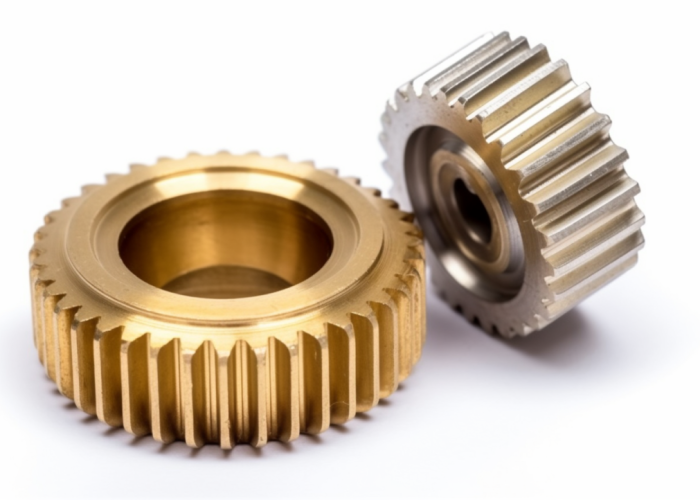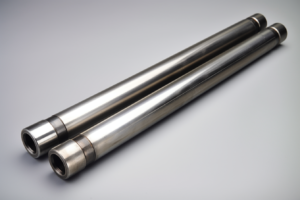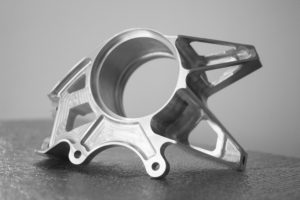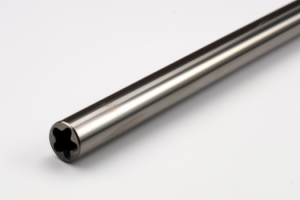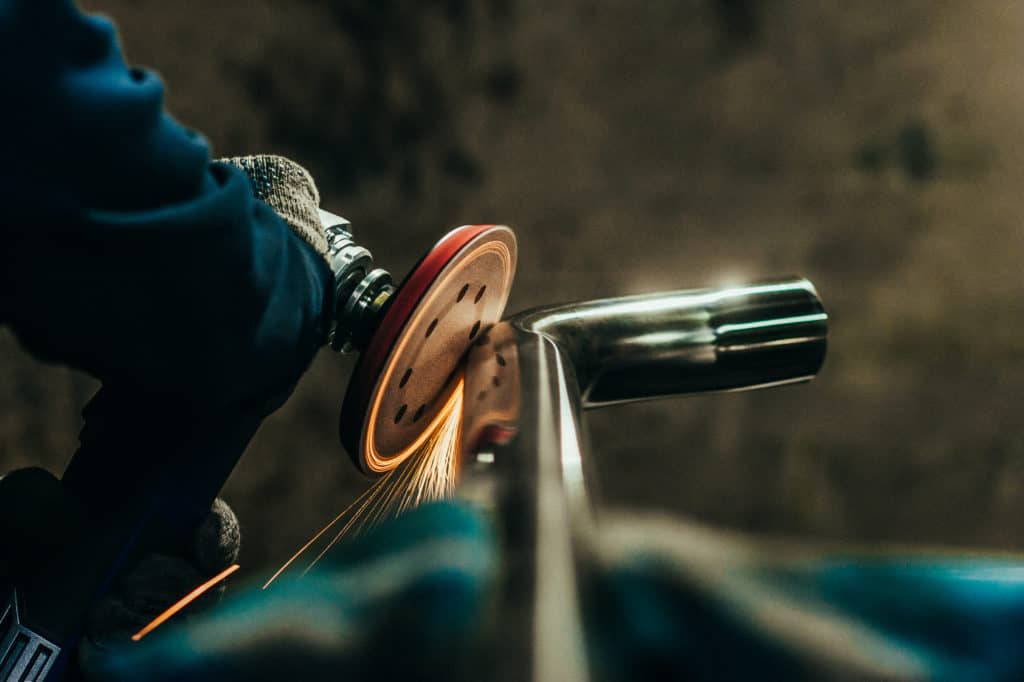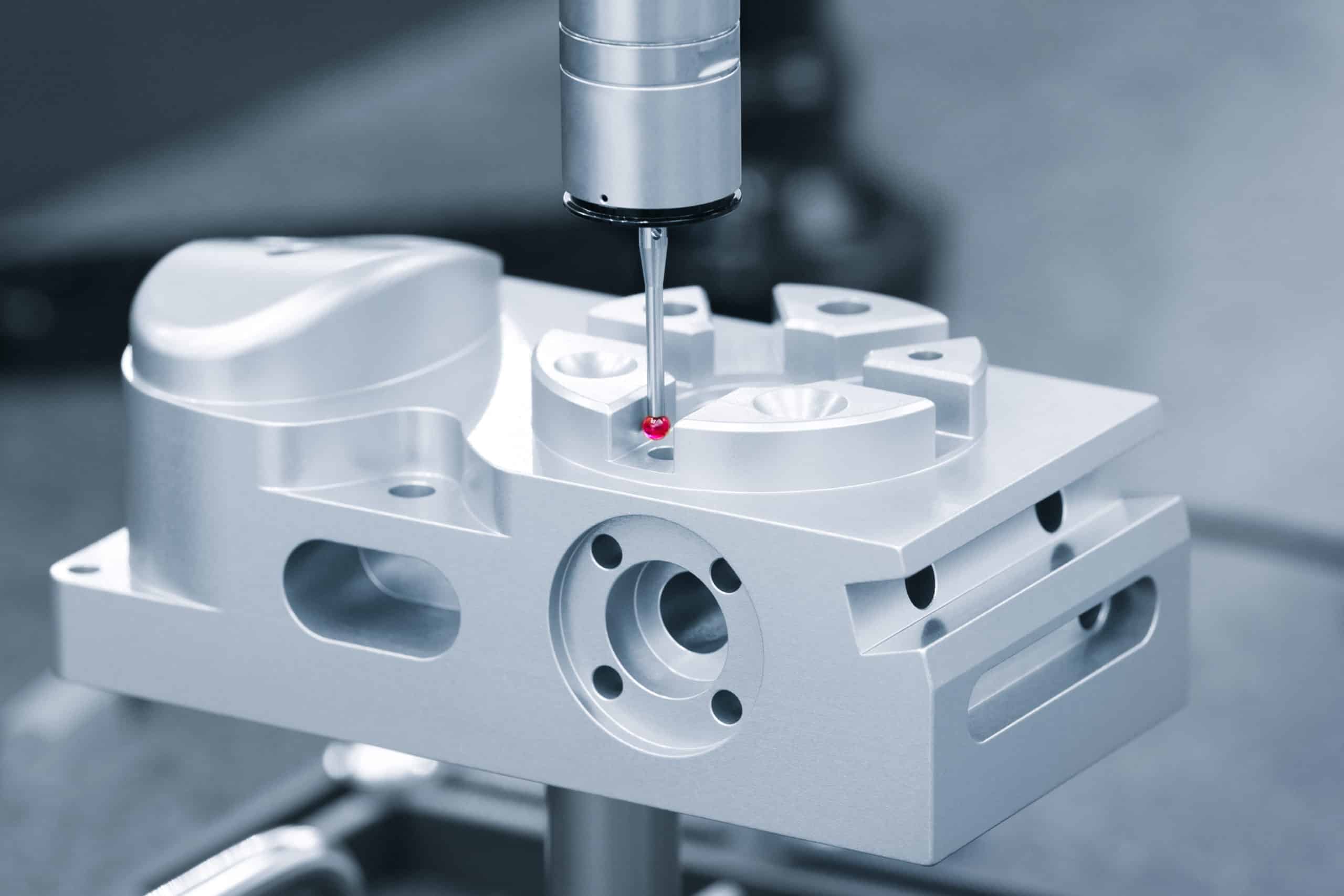Choosing between steel and non-ferrous metals isn’t just about material properties—it’s about optimizing performance, weight, and cost for your specific application. With 15+ years machining everything from aerospace brackets to medical enclosures, we’ve seen how the right material choice can dramatically improve both manufacturability and end-product performance.
Non-ferrous metals excel when you need corrosion resistance, weight reduction, electrical conductivity, or non-magnetic properties that steel cannot provide. Common applications include marine components, aerospace structures, electrical housings, and parts requiring anodizing or specialized finishes.
Discover top non-ferrous material trade-offs, when to switch from steel, and how to balance cost with tolerance—backed by real CNC machining data.
Table of Contents
What non-ferrous metals should I consider for CNC machining or sheet metal work?
The most practical non-ferrous metals for precision manufacturing are aluminum 6061-T6 (general purpose), aluminum 7075-T6 (high strength), brass C360 (free-machining), copper 101 (electrical), and titanium Grade 2 (corrosion-critical applications). Each offers distinct advantages: 6061 delivers excellent machinability with ±0.01 mm tolerance capability, while 7075 provides aerospace-grade strength at 30% weight savings over steel.
We routinely achieve ±0.005 mm tolerances on aluminum 6061 using verified CMM inspection and climate-controlled machining centers. Brass C360 machines at 2x the feed rates of steel with Ra 0.8 μm surface finishes straight off the mill. Copper 101 requires 30% slower speeds to prevent work hardening but delivers 100% IACS conductivity. Titanium Grade 2 extends tool life when machined with flood coolant and carbide tooling specifically designed for titanium’s work-hardening characteristics.
Material selection impacts both manufacturability and cost. Aluminum 6061 costs roughly 2-3x steel per pound but machines 40% faster. Titanium costs 10-15x more than aluminum but provides corrosion resistance that stainless steel cannot match in chloride environments. When specifying materials for quotes, referencing ASTM standards (B209 for aluminum sheet, B152 for copper alloys) ensures consistent material grades and properties.
Quick Selection Matrix:
- Budget-conscious + general use → Aluminum 6061-T6
- Strength-critical + lightweight → Aluminum 7075-T6
- High-volume + complex geometry → Brass C360
- Electrical conductivity required → Copper 101
- Extreme corrosion resistance → Titanium Grade 2
Design Takeaway: Start with aluminum 6061 for most applications, then upgrade only when specific performance requirements justify the material cost premium—strength needs point to 7075, electrical needs point to copper, corrosion needs point to titanium.
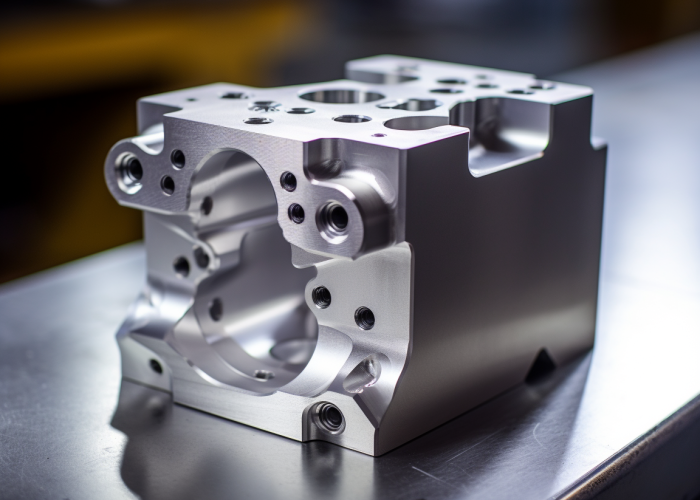
How do I pick the right non-ferrous metal for my part?
Start with your primary requirement: structural loads point to aluminum 7075 or titanium, corrosion environments demand titanium or marine-grade aluminum, electrical applications need copper or aluminum, and general fabrication works best with aluminum 6061.
We’ve found that 80% of material selection comes down to three critical factors: mechanical requirements, environmental conditions, and manufacturing constraints. For structural parts under 500 lbs load, aluminum 6061 provides adequate strength at the lowest cost. Above 500 lbs or in fatigue-critical applications, 7075-T6 delivers 2x the tensile strength. In salt spray or chemical environments, titanium Grade 2 resists corrosion that destroys even marine-grade aluminum within months.
Manufacturing constraints often drive the final decision. Aluminum machines 3x faster than titanium, reducing labor costs significantly. Copper work-hardens quickly, requiring interrupted cuts and slower feeds. Brass C360’s lead content provides natural lubrication, enabling high-speed machining with excellent surface finishes. Temperature exposure above 200°C eliminates most aluminum alloys, pointing toward titanium or copper solutions.
Design Takeaway: Use a hierarchy approach—define your non-negotiable requirement first (strength, corrosion resistance, conductivity), then optimize for cost and machinability. Start with aluminum 6061 as your baseline, upgrade to 7075 for strength needs, copper for electrical requirements, or titanium only when corrosion resistance justifies the 10x cost premium and slower machining.
When should I use non-ferrous metals instead of steel?
Switch to non-ferrous metals when you need corrosion resistance in marine/chemical environments, weight reduction exceeding 30%, electrical conductivity, non-magnetic properties, or aesthetic finishes like anodizing that steel cannot achieve. The material cost premium (2-10x steel) must be justified by performance gains or design requirements that steel fundamentally cannot meet.
From our manufacturing experience, the most compelling reasons to abandon steel are weight savings in moving assemblies, corrosion resistance in outdoor applications, and electrical shielding requirements. Aluminum 7075 delivers 40% weight reduction with equivalent strength to mild steel—critical in drone frames or robotic arms where every gram affects performance. Titanium resists salt spray corrosion that destroys stainless steel 316 in marine environments within 2-3 years.
Cost analysis often reveals hidden savings despite higher material prices. Aluminum’s superior machinability reduces cycle times by 30-40%, offsetting material cost in complex geometries. Corrosion-resistant materials eliminate protective coating costs and maintenance cycles. However, avoid non-ferrous materials when high magnetic permeability, extreme hardness (>40 HRC), or budget constraints under $50/part make steel the practical choice.
Design Takeaway: Calculate total cost including machining time, finishing, and lifecycle maintenance—not just raw material cost. Make the switch when steel’s limitations create design compromises or long-term reliability issues, but remain with steel for general structural applications where its magnetic properties, hardness, and cost advantages outweigh non-ferrous benefits.
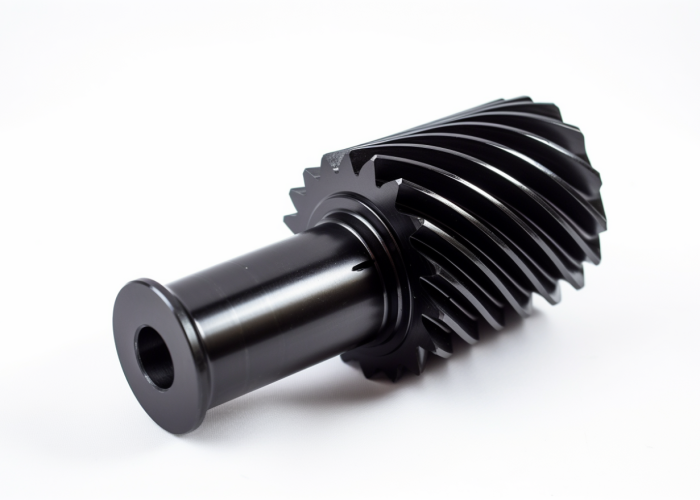
Which non-ferrous metals let me hold tight tolerances without driving up cost?
Aluminum 6061 and brass C360 offer the best tolerance-to-cost balance, routinely achieving ±0.01 mm on critical features without specialized fixturing. Aluminum 6061 costs 40% less than 7075 while maintaining excellent dimensional stability, and brass C360 machines with minimal tool deflection.
We consistently hold ±0.005 mm tolerances on aluminum 6061 using standard three-axis mills with verified CMM inspection protocols. The material’s low cutting forces and thermal stability minimize part distortion during machining. Brass C360’s lead content provides natural lubrication, reducing tool wear and maintaining dimensional consistency across 500+ part production runs. Copper achieves similar precision but requires 50% slower feeds, increasing labor costs.
Titanium presents cost challenges for tight tolerances. Achieving ±0.01 mm typically requires carbide tools, flood coolant, and rigid fixturing—often tripling machining time compared to aluminum. However, aerospace applications justify this premium when corrosion resistance and precision are both required. Documentation requirements for regulated industries may specify inspection protocols beyond standard general tolerances.
Cost-Effective Tolerance Selection:
- ±0.05 mm: Aluminum 6061, brass C360, copper (standard cost)
- ±0.01 mm: Aluminum 6061, brass C360 (20% cost increase)
- ±0.005 mm: Aluminum 6061, brass C360 (50% cost increase, CMM required)
- ±0.01 mm + corrosion resistance: Titanium (200% cost increase)
Design Takeaway: Specify ±0.01 mm only on functional features like bearing surfaces or mating parts. Use aluminum 6061 for most precision work, brass C360 for high-volume applications, and reserve titanium for applications where both tight tolerances and corrosion resistance justify the 3x machining cost premium.

What's the minimum wall thickness I can design with non-ferrous metals?
Aluminum 6061 reliably machines to 0.5 mm walls in pockets and 0.3 mm in open profiles, while brass C360 handles 0.4 mm walls due to superior rigidity. Copper requires 0.8 mm minimum, and titanium needs 1.0 mm walls to prevent chatter and tool breakage.
We’ve successfully produced 0.3 mm aluminum walls using high-speed spindles (18,000 RPM) with 1.0 mm end mills and climb milling techniques. Thin-wall success depends on proper workholding—vacuum fixtures distribute clamping forces without distortion. Brass maintains better dimensional accuracy at thin sections because its higher density resists deflection. For production reliability, we add 0.2 mm safety margin to theoretical minimums.
Support ribs become essential below 1.0 mm thickness. Unsupported spans over 25 mm deflect during cutting regardless of material choice. Titanium’s work-hardening makes thin walls particularly challenging, often causing tool breakage in sections below 1.0 mm thickness.
Minimum Wall Thickness Guide:
- Aluminum 6061: 0.5 mm (pockets), 0.3 mm (profiles)
- Brass C360: 0.4 mm (all features)
- Copper 101: 0.8 mm (work hardening limit)
- Titanium Grade 2: 1.0 mm (chatter prevention)
- Add support ribs: Every 20 mm for spans >25 mm
Design Takeaway: Design walls 50% thicker than minimums for production reliability. Choose aluminum 6061 for lightweight thin-wall designs, brass C360 for dimensional stability in thin sections, and avoid titanium in applications requiring walls below 1.0 mm thickness.
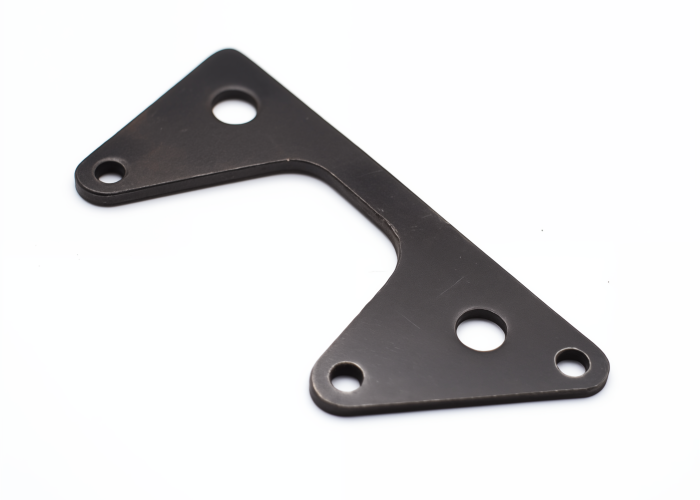
Can I weld or join non-ferrous metal parts in my design?
Most non-ferrous metals weld well with proper techniques: aluminum uses TIG welding with AC current, copper requires high heat input and deoxidized filler, brass needs careful heat control to prevent zinc loss, while titanium demands inert gas shielding and contamination-free preparation. Mechanical fastening often provides more reliable joints for mixed-material assemblies.
We’ve successfully TIG welded aluminum 6061 assemblies achieving 85% of base metal strength using ER4043 filler rod and proper joint preparation. Aluminum’s oxide layer requires cleaning immediately before welding—wire brushing with stainless steel brushes removes contamination without embedding particles. Copper welding requires preheating to 200°C to prevent cracking, while brass loses zinc above 425°C, creating porous welds that fail under load.
Titanium welding demands extreme cleanliness—any oxygen contamination creates brittle zones that crack during service. We use argon purge gas on both sides of the joint and post-weld stress relief to maintain corrosion resistance. For production efficiency, mechanical joining often outperforms welding: threaded fasteners, rivets, or structural adhesives provide consistent strength without heat-affected zone complications.
Joining Method Selection:
- Aluminum assemblies: TIG welding (ER4043 filler) or structural adhesives
- Copper components: TIG welding with preheating or brazed joints
- Brass parts: Soft soldering or mechanical fasteners (avoid welding)
- Titanium critical parts: TIG welding with full inert gas protection
- Mixed materials: Mechanical fasteners or threaded inserts
Design Takeaway: Design for mechanical fastening when possible to avoid heat-affected zone weakening and simplify production. Reserve welding for aluminum structural assemblies where joint strength justifies the setup complexity, and use threaded inserts or rivets for mixed-material designs requiring disassembly.
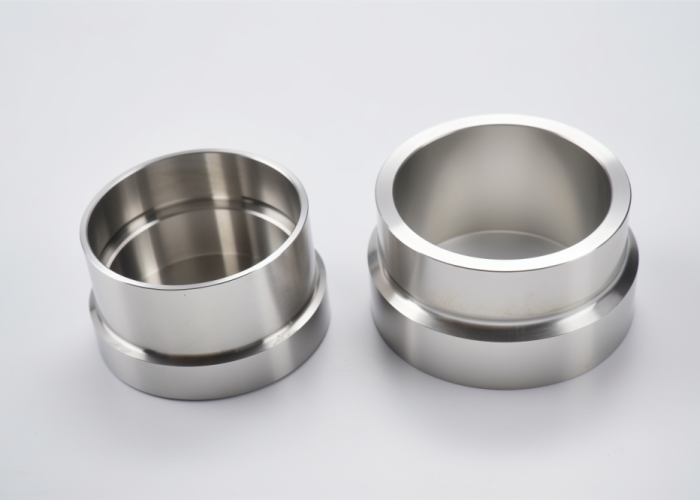
What surface treatments work best with non-ferrous metals?
Anodizing dominates aluminum finishing for durability and appearance, while copper takes plating (nickel, tin) for corrosion protection, brass accepts various platings and patinas, and titanium uses anodizing or PVD coatings for color and wear resistance.
We routinely specify Type II anodizing for aluminum parts requiring Ra 1.6 µm finishes with excellent corrosion protection. Hard anodizing (Type III) provides wear resistance equivalent to tool steel for high-wear applications. Copper electroplating with nickel creates corrosion barriers lasting 5+ years in marine environments—critical for electrical enclosures exposed to salt spray.
Titanium anodizing produces vibrant colors (blue, purple, gold) through controlled oxide thickness while maintaining biocompatibility for medical applications. PVD coatings on titanium achieve 2-3x surface hardness improvement for wear-critical components. Brass patina treatments provide consistent coloration but require clear coating to prevent continued oxidation and color shifts.
Surface Treatment Guide:
- Aluminum: Type II anodizing (general), Type III (wear resistance), powder coating (color)
- Copper: Nickel plating (corrosion), tin plating (electrical), patina (decorative)
- Brass: Clear coating (maintain finish), nickel plating, antiquing treatments
- Titanium: Anodizing (color + biocompatible), PVD coating (wear resistance)
Design Takeaway: Account for 0.025-0.050 mm dimensional growth when specifying surface treatments on precision parts. Use Type II anodizing for most aluminum applications, nickel plating for copper in corrosive environments, and reserve PVD treatments for titanium parts requiring both corrosion resistance and surface hardness.
Conclusion
Non-ferrous metals excel in weight-critical, corrosion-prone, or conductive applications where steel limitations outweigh cost premiums. Focus on aluminum 6061 for general use, 7075 for strength, and copper alloys for conductivity. For complex non-ferrous material selection or tight-tolerance non-ferrous machining, contact us to explore manufacturing solutions tailored to your product requirements.
Frequently Asked Questions
6061 and 7075 anodize excellently with consistent color and corrosion protection. 2024 aluminum anodizes poorly due to copper content, creating blotchy appearance. Cast aluminum alloys (A356, A380) don’t anodize well due to silicon content. Stick with 6061 for best anodizing results.
Yes. Aluminum uses carbide tools at high speeds (3000+ SFM), brass machines with standard HSS tools, copper needs sharp geometry to prevent work hardening, and titanium requires carbide with flood coolant at slow speeds. Each material demands specific feeds and speeds for optimal results.
Aluminum 6061 achieves Ra 1.6 μm finishes straight from the mill, comparable to stainless steel. Anodizing can improve this to Ra 0.8 μm. However, aluminum shows tool marks more readily than stainless, requiring careful tool selection and finishing passes for cosmetic applications.
Aluminum typically machines 30-40% faster than steel, potentially reducing lead times. However, material availability can offset this—specialty grades like 7075 or titanium may require 2-3 weeks material lead time versus readily available steel stock. Plan accordingly for exotic alloys.
Aluminum 6061 costs 2-3x steel per pound but machines 40% faster, often offsetting material cost in complex geometries. Titanium costs 10-15x more than steel and requires 3x longer machining time. Factor in total production cost including cycle time, not just raw material pricing.
Aluminum 7075-T6 provides the best strength-to-weight ratio at 570 MPa tensile strength and 2.8 g/cm³ density. Titanium Grade 2 offers superior corrosion resistance but costs 10x more. For most structural applications, 7075 delivers aerospace performance at reasonable cost.
